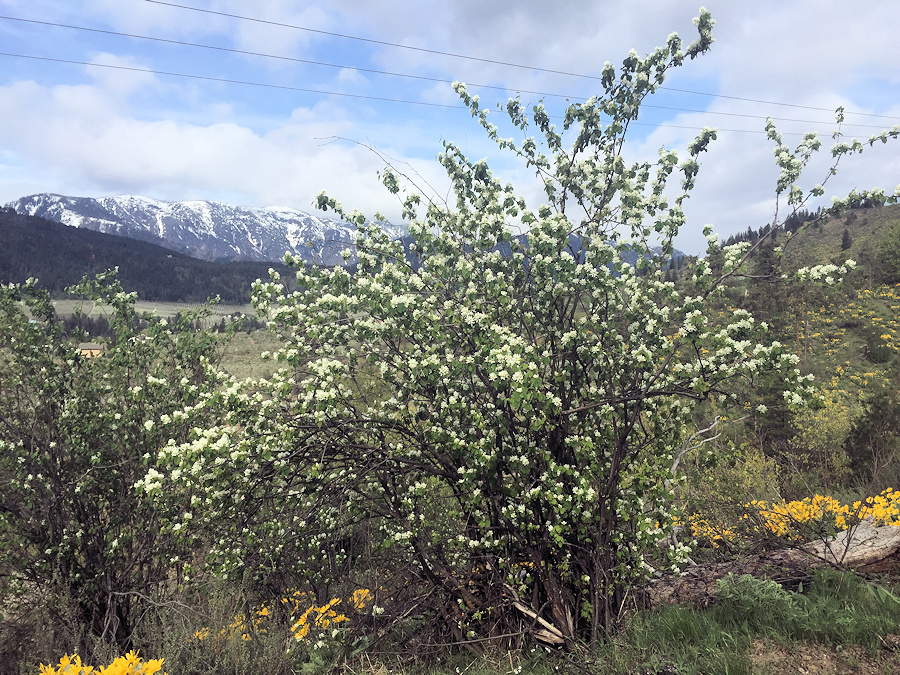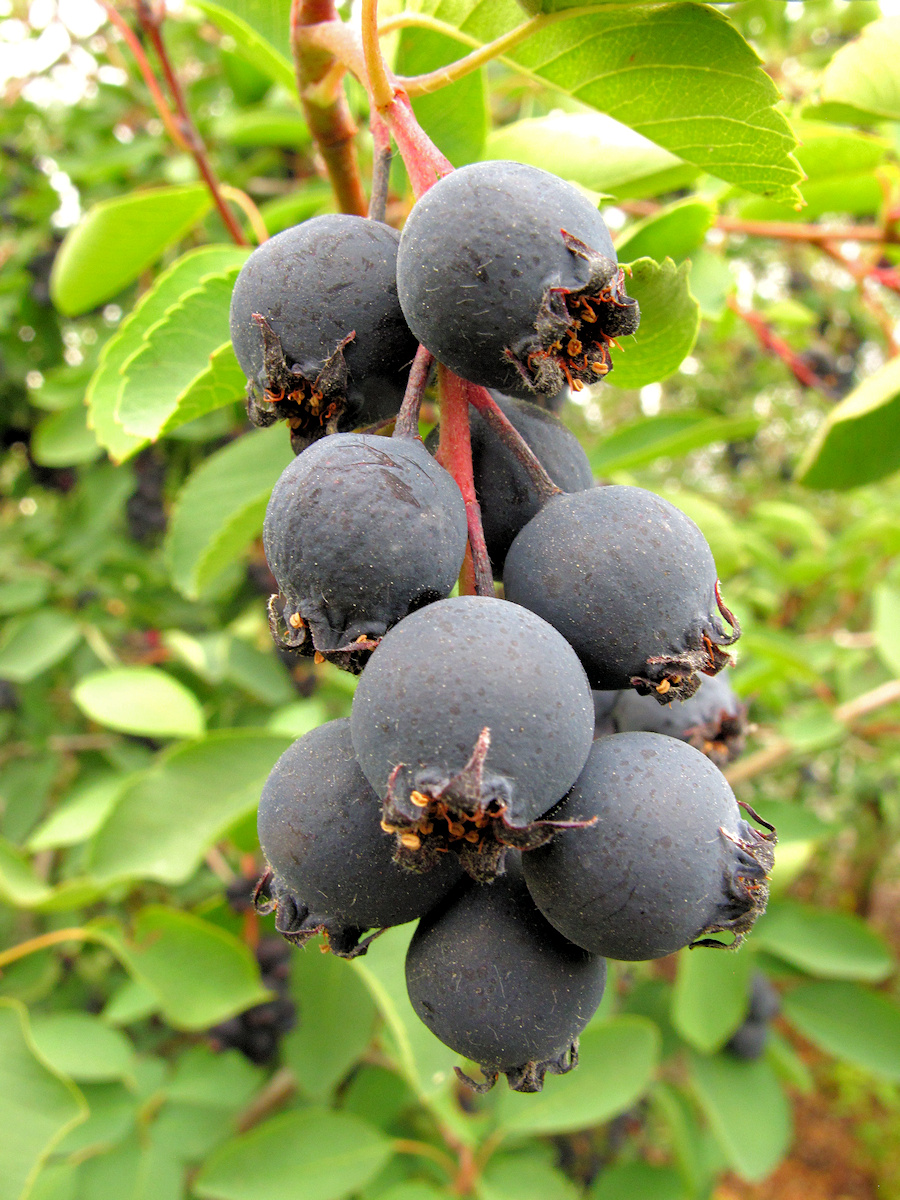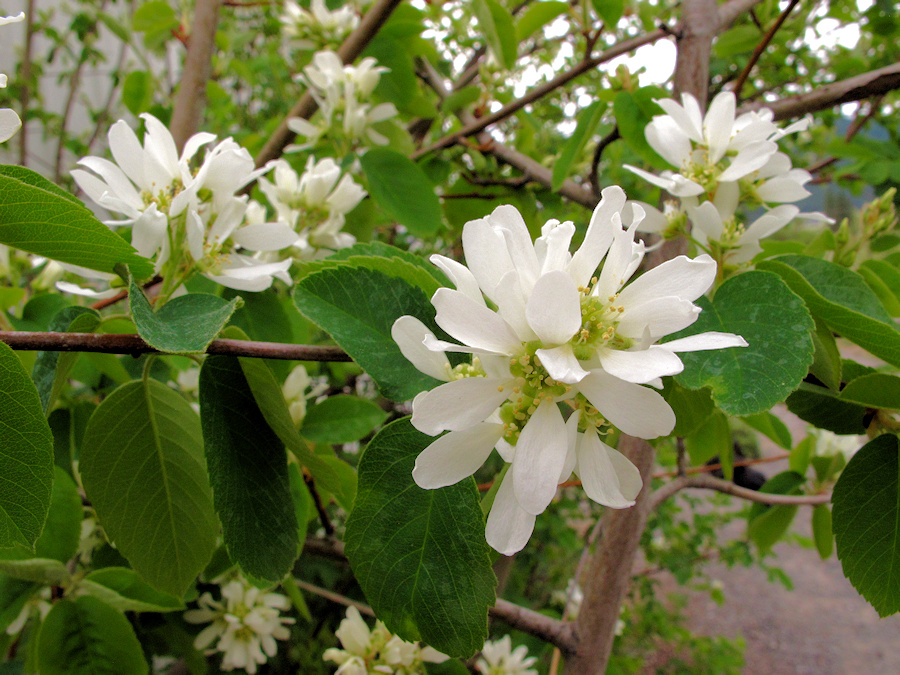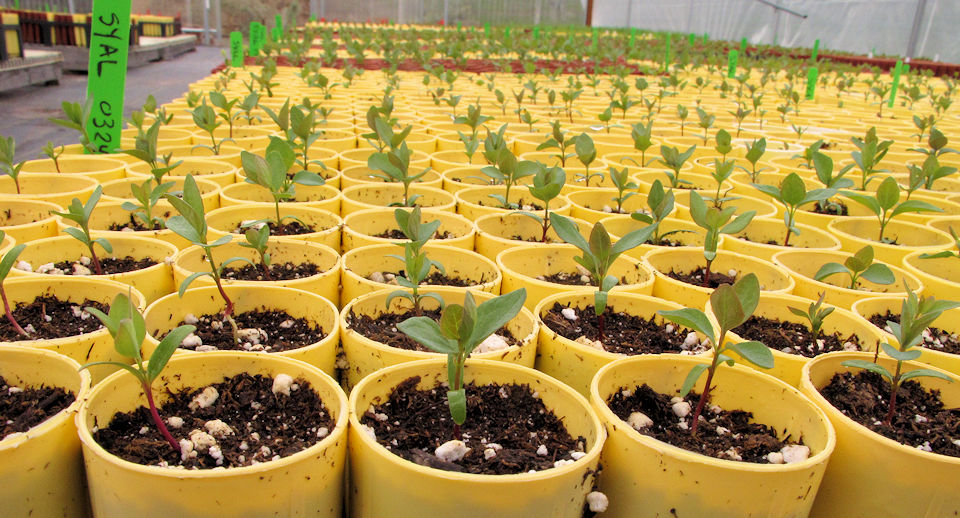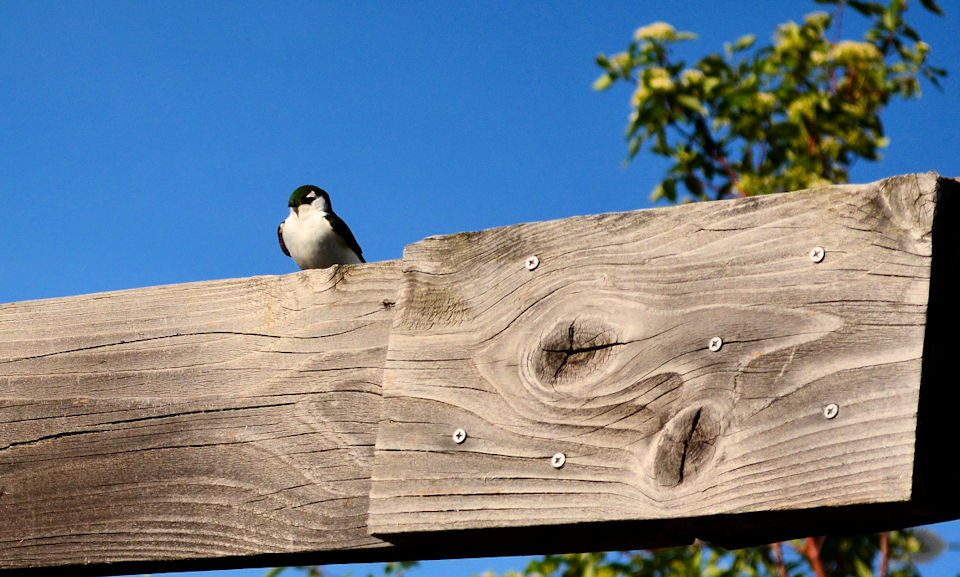Serviceberry, or is it Saskatoon?
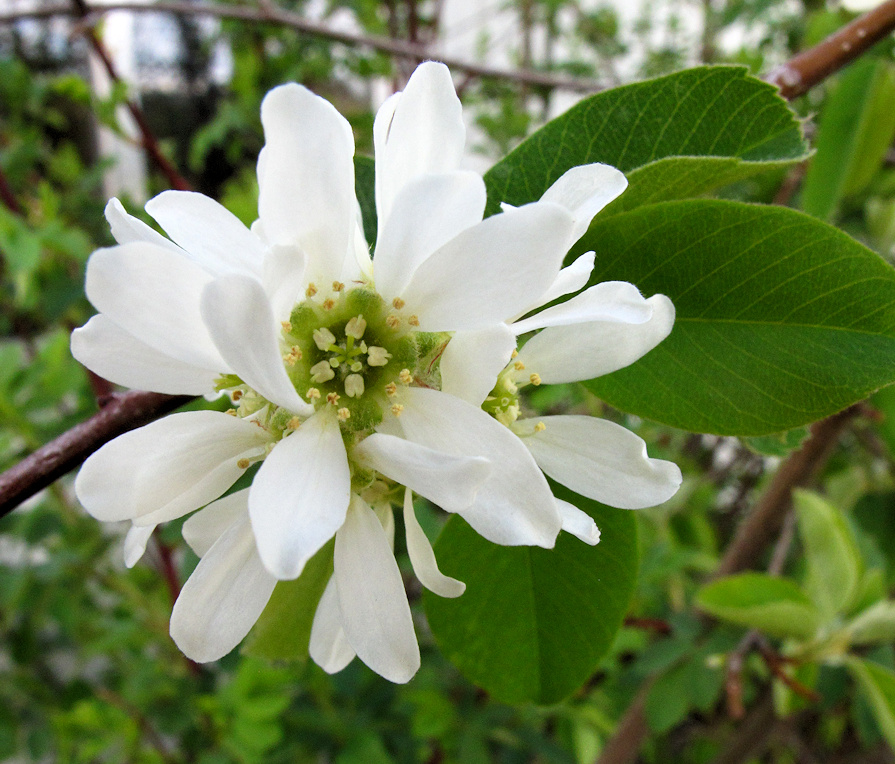
Serviceberry (Amelanchier alnifolia) is one of the very first native shrubs to bloom each spring in our area. These medium to tall shrubs (8-18′ tall) can be mass of white flowers in April, prominently displayed on the hills around Peshastin and beyond. They are found throughout Washington, as well as from Alaska and across Canada, south to California and through the Rockies to the Upper Midwest.
Serviceberry is usually a multi-stemmed shrub but can be trained to be tree-like with a single trunk, although that form is uncommon in the wild. It is fairly well-behaved for a landscape shrub, suckering some but not spreading from the base. The flowers, fruits and yellow fall color all make for a distinctive and attractive plant.
The fruit, which ripens in July, is a “pome”, like a mini-apple, dark blue to deep purple, and rather sweet. Native Americans used it extensively, often more than any other native fruit in the interior Northwest, and they recognized up to eight distinct varieties, based upon flowering time and the size, texture and sweetness of the fruits. It often bears heavy crops and is loved by many birds.
American robin (Turdus migratorius) (the only scientific name for a bird I can remember) Photo from Wikimedia
Serviceberry has several other common names, chief among them sarvisberry, Juneberry and saskatoon, the most common in Canada. This name is derived from the Blackfoot (or Cree) name for this bush, “mis-ask-a-tomina“. Another is alderleaf shadbush, from the leaf shape and the blooms appearing when shad, an anadramous fish, returned to rivers from the ocean along the east coast of Canada and the US. My favorite, which I have never heard anyone use, is chuckley pear. The name serviceberry itself is said to come the fruit’s resemblance to a species of European mountain ash (Sorbus sp.)

